
Please refer to earlier post JJCM in KT #4 for the first part. We selected a typically old fashion round coffee table with marble top sitting on old fashion round chair. The atmosphere felt authentic as we ordered our cup of Hainanese (a Chinese dialect that is famous for running coffee shops and old style bakeries) coffee. The only difference is that our order is taken by a Malay and we were served by a Malay.

On the pretext of visiting the toilet, I peeked into the kitchen and was surprised that all the staffs preparing our food and drinks were also Malay. From the master coffee brewer to the bread toaster and the spaghetti chef. Yes, you can order spaghetti here.
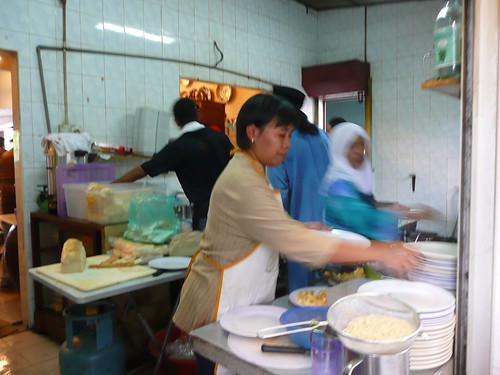
I ordered coffee the way I like it – thick, black and sweet. I remembered Charles Maurice immortal lines:
It came in the standard coffee cup that one finds in every old style kopitiam in
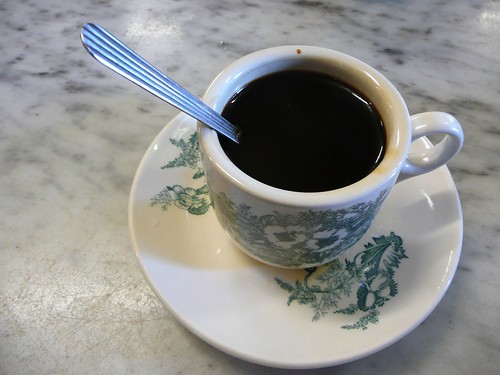
If you’re brought up on Nescafe, espresso and cappuccino, you may not like this coffee. We on the other hand think it is as ‘sweet’ as the devil and certainly not as pure as an angel. We have made our own unique modification and addition. The resultant taste is slightly ashy carrying a tinge of sourish fermented flavor and a solid robustness not for the faint hearted. As if this is not enough, the patrons will often asked for “kau kau” (thick thick) together with “ti ti” (sweet sweet). This is the Malaysian way.
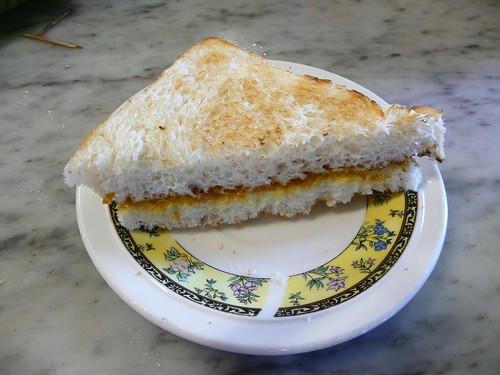
If there are some who do not like our coffee, I have not met any who do not like our toasted bread. No machine can do this job. It must be done by hand, over a fierce charcoal fire that is neither too hot nor too tame. The judgment of the one toasting is crucial so he can produce a well toasted bread (not burnt) that is crispy on the outside and soft and tender within which is a world of a different from dry machine toasted bread. On these slices are then slap a thick spread of kaya (coconut egg yolk jam) and margarine (preferably butter).
Hai Peng used the ‘correct’ bread for their toast. (
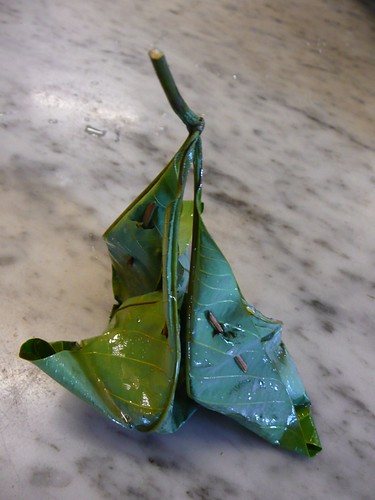 Phua brought over a string of “Pulut Tapai” that is wrapped in leaves. Being a Terengganunese, he enthusiastically recommended us to try it. We cautiously put a piece into our mouth and bit. Phoo! A very strong odor immediately overwhelmed us. The flavor is very similar to fermented rice wine. Way too strong for me. I drowned it with coffee. Phua was disappointed with our reactions, so were we but this is definitely an acquired taste.
Phua brought over a string of “Pulut Tapai” that is wrapped in leaves. Being a Terengganunese, he enthusiastically recommended us to try it. We cautiously put a piece into our mouth and bit. Phoo! A very strong odor immediately overwhelmed us. The flavor is very similar to fermented rice wine. Way too strong for me. I drowned it with coffee. Phua was disappointed with our reactions, so were we but this is definitely an acquired taste.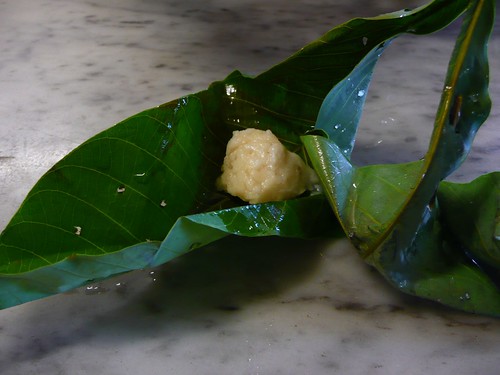

I was completely satiated by now putting down my third breakfast. But I was curious – what would the Terengganu nasi lemak (coconut fragrant rice with sambal – a pounded chilly, prawn paste, dried prawns, onion, tamarind, etc with palm sugar and salt) taste like?

My taste buds override my overworked stomach and I opened the paper wrapper (used to be coconut leaves in the old days) to reveal a delight. This is what a country beauty look and taste like. Unadorned, unassuming, unpretentious, relying on its natural goodness to win you over. With just the first spoonful, it evoked long time memory of a simpler life at a simpler time. I had forgotten the simple original taste of a good nasi lemak.
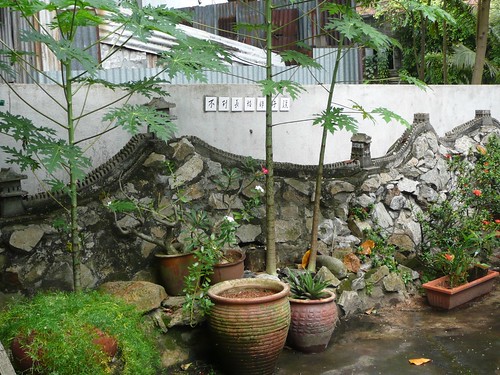
I liked Hai Peng for many reasons, not least of which is their sense of individuality, beauty and passion. At the back of the shop which not many outstation patrons may be aware of is a replica of the

No comments:
Post a Comment